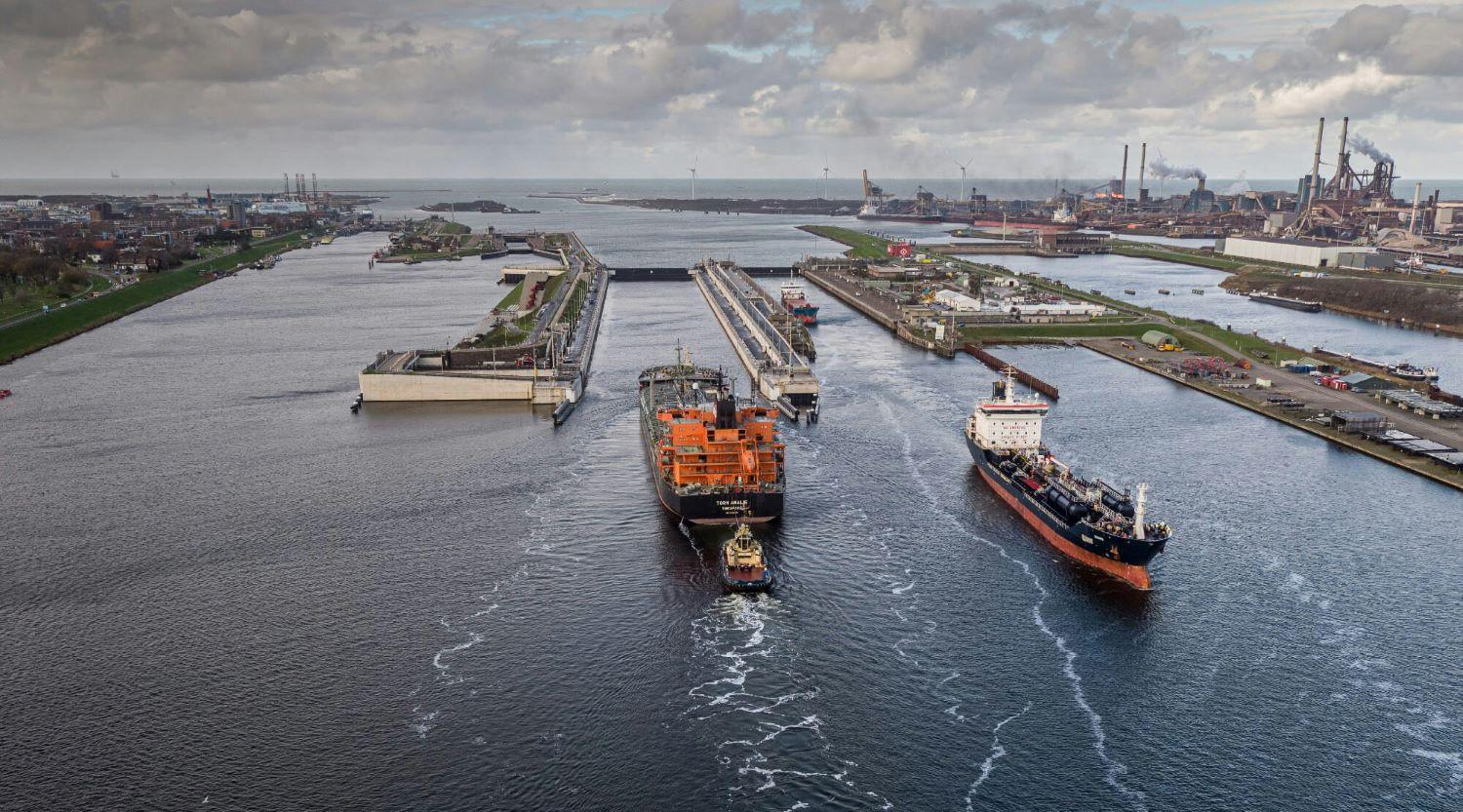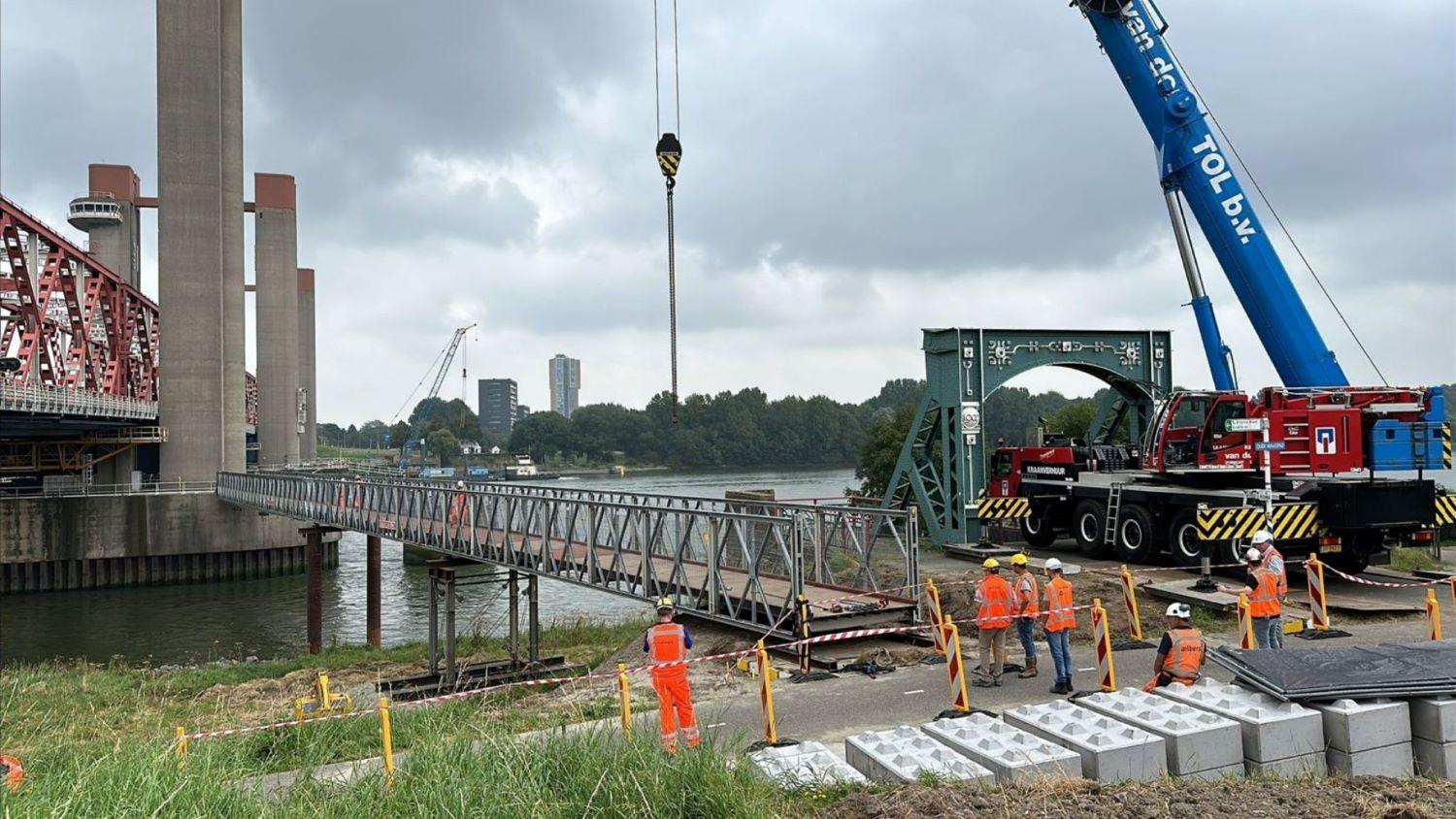Knowledge sharing for future-proof water infrastructure
To protect us from floods, provide us with fresh water and make our country liveable, we depend on tens of thousands of locks, pumping stations and flood defences. To make these hydraulic engineering structures future-proof, Deltares, together with Rijkswaterstaat, MARIN and TNO, develops knowledge and tools for initial decision-making on replacement and renovation. In this way, we are laying the foundations for a coherent and innovative perspective on resilient infrastructure.

The Netherlands depends on tens of thousands of hydraulic structures like locks, storm surge barriers, weirs, and pumping stations to protect sixty percent of the country from flooding. These structures are vital for water safety, freshwater supply, and the country’s continued liveability.
Due to wear and tear, new standards, use requirements and climate change, several of these structures are due to be renovated or replaced. Also new infrastructure construction deals with changing societal wishes and uncertain climatic conditions, posing challenges for us to develop a coherent and innovative perspective on infrastructural systems.
Knowledge Programme Hydraulic Infrastructure
To ensure their maintenance and future readiness, Rijkswaterstaat, along with research institutes Deltares, MARIN, and TNO, launched the Knowledge Programme Hydraulic Infrastructure (Kennisprogramma Natte Kunstwerken) in 2017.
The programme focuses on advancing knowledge and making it applicable in the early stages of decision-making, when comparative perspectives on how and when to preserve and improve these critical assets are required. Below several significant perspectives like salt intrusion, data information and ecological objectives are highlighted.

Navigate challenges
From 2025 to 2050, billions of euros will be needed to replace or renovate aging infrastructure, such as the Maeslant Barrier and the IJmuiden Sea Lock. Many of these mid-20th-century structures are nearing the end of their 100-year lifespan.
Delays in this renovation or replacement task could increase costs, reduce reliability, and threaten safety and commerce. The Knowledge Programme helps asset managers navigate these challenges and secure the future of Dutch water infrastructure.
Salt management
One key challenge in managing hydraulic structures is saltwater intrusion, a problem that becomes evident in the operation of locks at the salt-freshwater boundary. Locks must not only accommodate increasingly larger ships, maintain stable water levels, and serve as primary flood defences, but also prevent saltwater intrusion.
For instance, each opening of the sea lock at IJmuiden allows 10,000 tonnes of saltwater to flow into the North Sea Canal, negatively impacting ecology, nature, agriculture, and drinking water supplies.
Knowledge Programme Deltares
How can a lock be designed to optimise salt management while meeting downstream system needs? What is the salt transport volume under different conditions, and how can the lock's salt management performance be evaluated? To mitigate these impacts, Deltares has developed through the Knowledge Programme, the Zeesluisformulering for navigation locks and the Spuisluisformulering for discharge sluices: advanced tools that predict how much saltwater passes through a lock and how this is influenced by climate change and drought.
These tools are used by Rijkswaterstaat and water authorities to make informed decisions about salt management when upgrading or replacing locks. For example, the Zeesluisformulering supports decisions on implementing salt barriers and optimising lock operations, thereby reducing the negative effects of saltwater on ecology and agriculture.
In addition to the Zeesluisformulering, other advanced knowledge, protocols and software tools have been developed to support civil engineering models for the renewal and renovation of hydraulic structures. All are accessible through the still-growing knowledge bank of the Knowledge Programme.
Protocol for risk analysis
One example of such solutions focuses on analysing collision risks at hydraulic structures, which are increasingly under pressure due to higher traffic volumes, heavier vessels, and faster shipping. A newly developed protocol offers a standardised approach for utilising anonymised AIS (Automatic Identification System) data and other information in risk analyses, with an emphasis on probability distributions of vessel speeds and masses rather than maximum values.
For example, the Spijkenisser Bridge, a key connection used intensively on a daily basis and scheduled for renovation, has been examined using this protocol. This kind of analysis can be used to identify necessary structural reinforcements and sustainable measures to ensure long-term functionality, enabling targeted and safe interventions.
Facilitating fish migration
A growing challenge in managing hydraulic structures is facilitating fish migration, important for maintaining the ecological balance and biodiversity of waterways. Many fish species need to move between salt and freshwater or between water bodies to spawn. The European Kaderrichtlijn Water (KRW) sets ecological objectives for water bodies, including improving the pass ability of hydraulic structures to support biodiversity.
Deltares contributes to these goals by developing the KRW-Verkenner (module ‘Ecologie Rijkswateren’), a digital platform enables the monitoring of the ecological status of water bodies and simulates the impact of various measures for fish migration. It provides Rijkswaterstaat and other water authorities with the necessary data and insights to make decisions on modifying hydraulic structures.
This makes it possible to efficiently pursue ecological goals and improve fish migration. Policymakers and ecologists also utilise it to restore and improve ecological connectivity between water bodies, enabling species like the Houting fish to continue their migration routes.

Guidelines policymakers
The knowledge bank in the Knowledge Programme shares reports and insights used by asset manager Rijkswaterstaat for decision-making, alongside experiences and relevant publications from other researchers and asset managers. This transforms the Knowledge Programme into more than a repository - it is an ongoing collaborative community that fosters knowledge development and informed decision making.
Additionally, knowledge is shared through various online sessions focused on specific topics, and an annual symposium is held to dive deeper into key issues, promoting continuous exchange and collaboration. This collective approach enables governments, engineering firms, and water authorities to work together in extending the lifespan of hydraulic structures and creating a sustainable infrastructure ready for the challenges of today and tomorrow.
Renewing and renovating hydraulic structures is complex, costly, and urgent. Timely action requires collaboration and knowledge sharing. Deltares proves its value as a trusted partner in addressing complex knowledge challenges.
Martine Brinkhuis-Jak, Programme Manager for Scientific Programmes, Rijkswaterstaat

